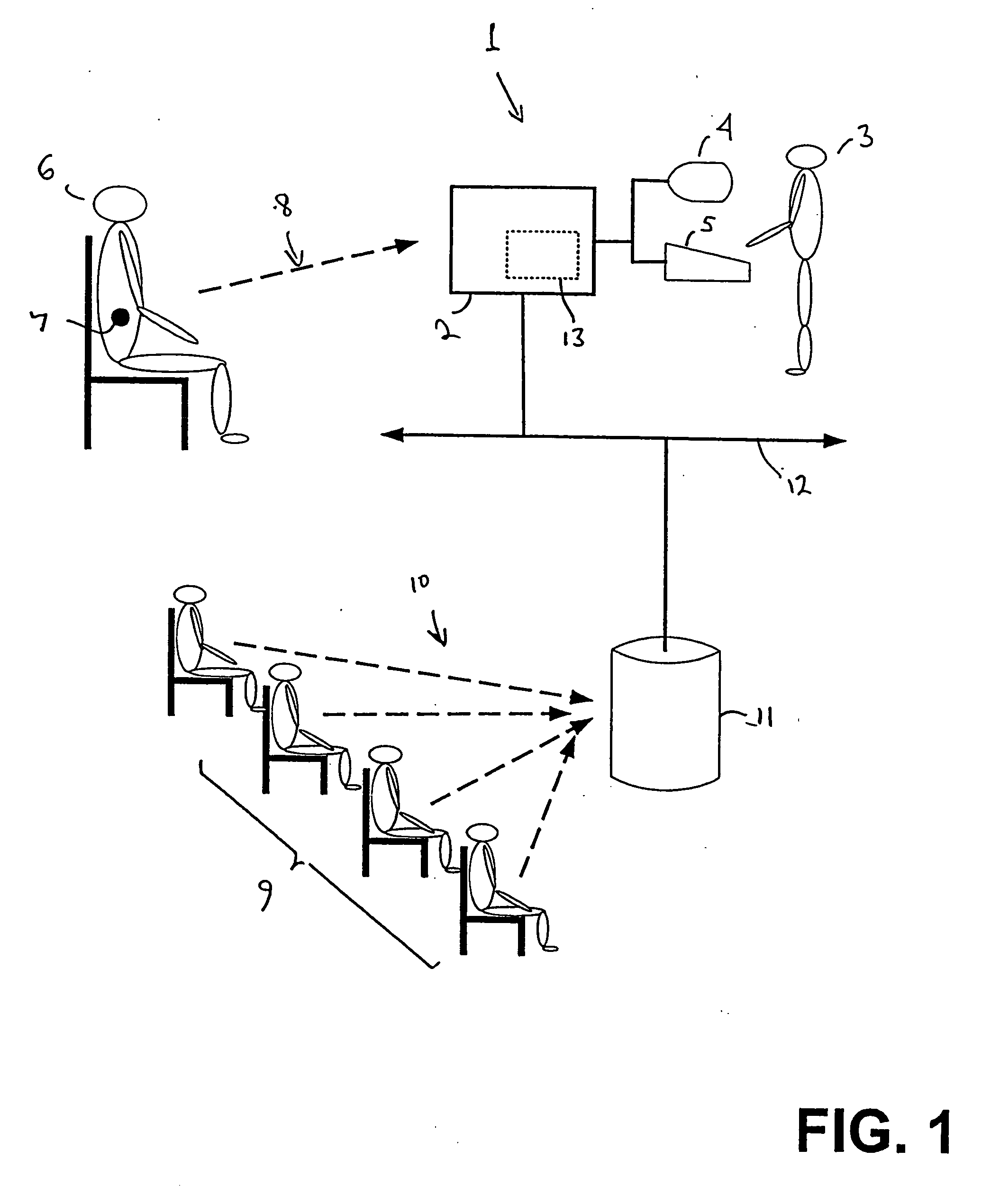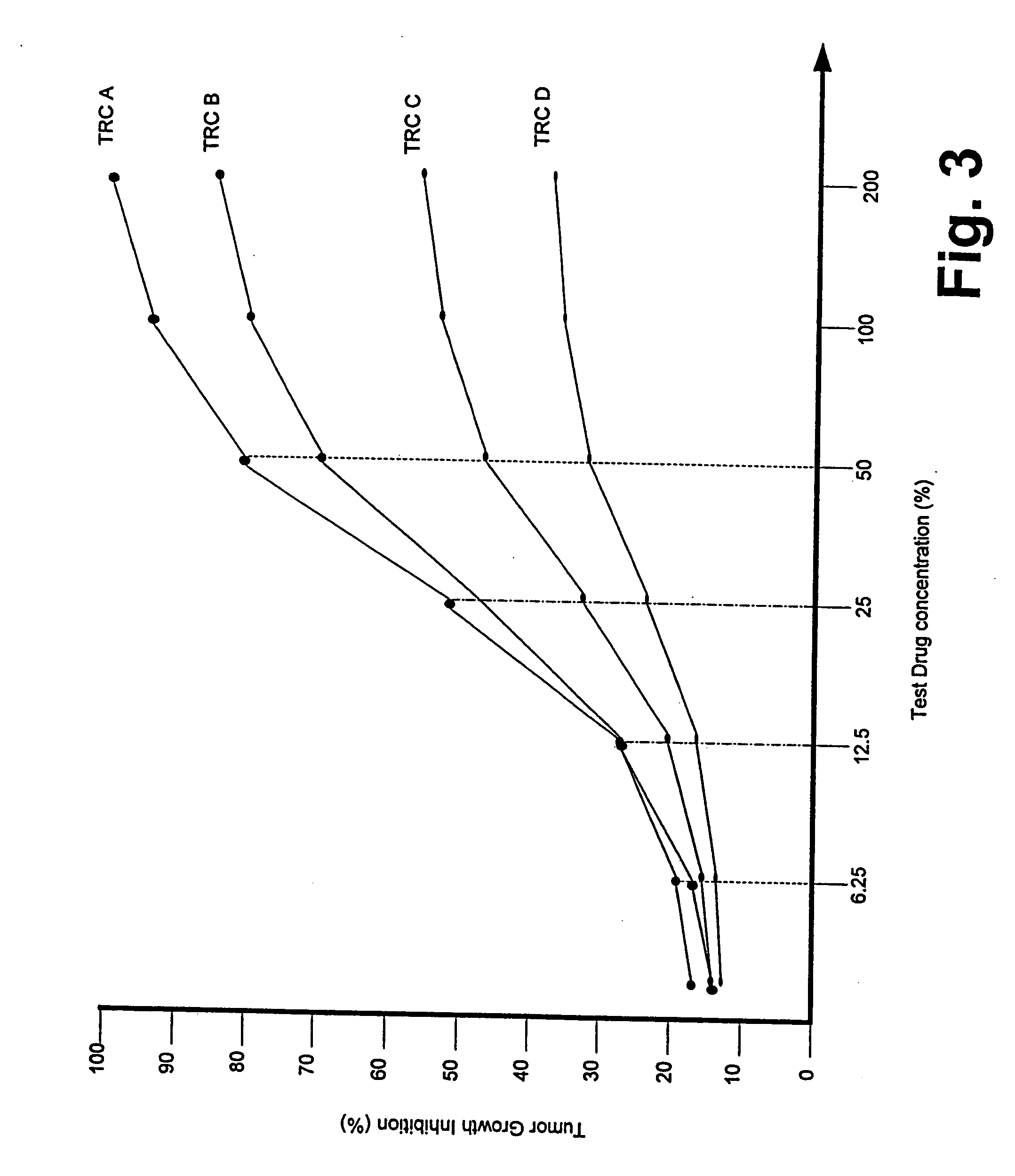Unfortunately despite the development of numerous
in vitro tumor chemosensitivity
assay systems, their use has had, at best, sporadic clinical success in selecting chemotherapeutic regimens for patients.
After various improvements, their technique evolved into the tetrazolium dye (MTT)
assay, which was incorporated into the National
Cancer Institute cancer
drug discovery and development program, and provides a technology that is reproducible between laboratories but is limited to testing
cell lines rather than patient tumors of heterogeneous
cell content.
However, technical problems were identified that made
in vitro modeling of
patient response difficult, and that called into question the entire concept of using in vitro methods to predict the drug response of patients.
However, a
large sample size is required, and there are also unresolved technical problems in consistently selecting the size of the explant, proof of ideal size, and rate of successful
assay.
This assay has been limited to tests of single drugs in vitro, without clinical application.
For all these reasons, these assay methods have failed to win general acceptance of the FDA expert review boards or notably expert practitioners.
A further assay, the ATP-TCA assay, described herein, has demonstrated correlation with clinical results relating to a few single agents, but no methods have arisen which permits its systematic and routine use for selecting therapy with reproducible clinical results, especially for combinations of agents.
EDR-type assays, based on the ATP-TCA method, have been applied to a number of tumor types, but without consistent success.
However, a further study, also for cutaneous
melanoma, comparing the effects of the
bifunctional alkylating agent treosulfan in vitro using an EDR-type assay based on the ATP-TCA method and
in vivo in clinical trials revealed a considerable discrepancy.
Therefore, in the nearly 35 years of effort, after the first attempts of Black and Spears, significant problems have been encountered over and over, and still remain, using known methods for chemo-
sensitivity testing of tumors.
These included low evaluability rate, growth of non-
malignant cells in test cultures, inability to obtain
dose-response results for both single agents and combinations (particularly with small specimens), and the difficulties in obtaining reproducible, objective and quantitative-measurements.
Few prospective clinical studies to demonstrate
efficacy and actual patient benefit have been performed.
At best, they revealed important limitations to the clinical applicability of sensitivity assays of any type.
At worst, none of these prospective studies were notably and unequivocally successful for such reasons as limitations of clinical and laboratory methodology, lack of systematic analytic efforts, flawed use of extreme drug response / resistance (EDR) type end-point criteria, and so forth.
Further,
empirical data resulting from EDR-type assays has typically resulted from isolated tests of individual drugs, and has not incorporated such key considerations as effects specific to particular diseases and their stages, translational (i.e. from laboratory
ex vivo to overall clinical
in vivo) success rates, prior history of therapy or resistance,
dose response throughout the entire
dose range, shape of the response curves of similar agents (i.e. those agents with similar structure or with dissimilar structure but similar mechanisms of cellular action).
Because of, inter alia, these heretofore unrecognized limitations and omissions, tumor chemo-sensitivity assays have not been accepted as a “
standard of care” for cancer patients.
 Login to View More
Login to View More  Login to View More
Login to View More 


